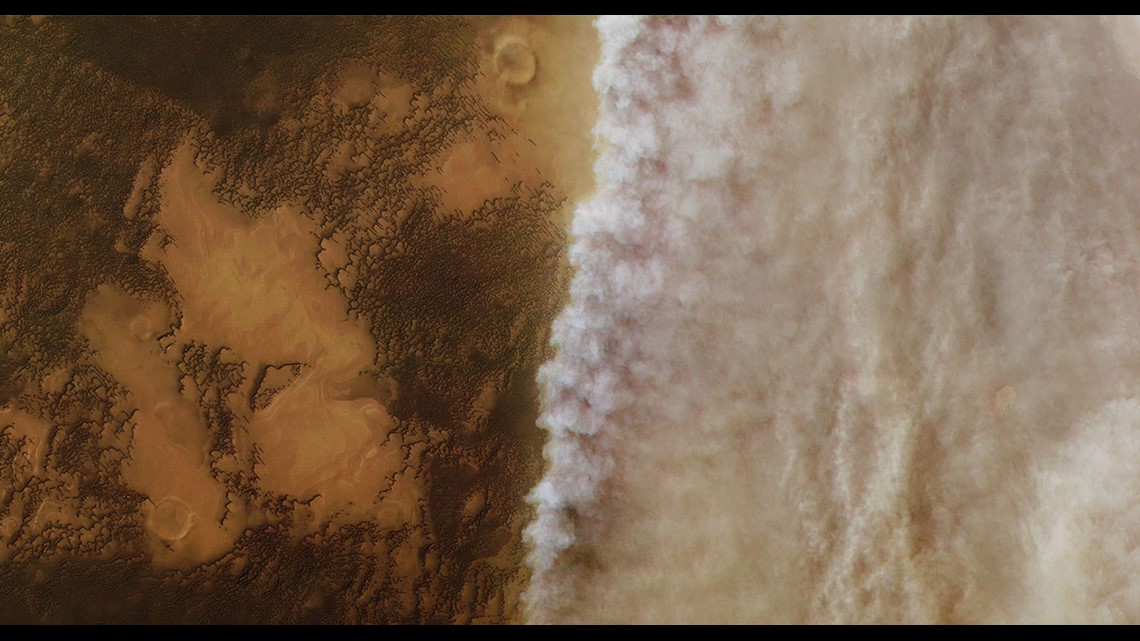BUFFALO, N.Y. — Scientists with NASA and many other organizations, including one here in Western New York, were a part of history a couple of weeks ago when the Mars rover Perseverance safely landed on the surface of the red planet.
Perseverance, or ‘Percy’ as some call it, almost immediately began transmitting images of the Martian landscape back to Earth. From a still picture like the one below, Mars looks almost familiar, maybe even pleasant. But the weather on Mars is anything but and it’s all because of how wildly different its atmosphere is from Earth’s.
If you compare the two planet’s atmospheres by weight, Mars’ is just 1% of Earth’s. In other words it is much thinner and has far fewer gas molecules.


And the molecules that are in Mars’ atmosphere are nearly all carbon dioxide. Less than 1% of all gas molecules in Mars’ atmosphere are oxygen. For comparison, Earth’s atmosphere is 21% oxygen.
The relative thinness of Mars’ atmosphere doesn’t just make it hostile to life, it makes the air at the surface incredibly susceptible to big temperature changes. The average annual temperature on Mars is a brutal -80 degrees Fahrenheit, but on a "summer" day, temperatures near the equator can reach a pleasant 70 degrees. Winter nights though can be impossibly cold: -220 degrees!
RELATED: Arctic Circle town hits 100 degrees
Earth’s global temperature is far more stable because its atmosphere is much more dense and has far more gas molecules that are able to absorb and trap energy from the sun. We feel that energy as heat. That heat is part of what allows life to thrive.
But whatever planet you’re on, if there’s an atmosphere and there’s big temperature differences, there are pressure differences too. Pressure differences translate to wind. Even though it doesn’t rain on Mars, the red planet sees some pretty epic dust storms which get kicked up by those winds.
RELATED: What makes the wind blow?
About once every Martian year (just under two Earth years) a dust storm the size of one of Earth’s continents spins away for weeks at a time. Every couple of years, these storms can cover the entire planet! But these global storms eventually blow themselves out. Learn why that happens in this week’s episode of Heather’s Weather Whys.
New episodes of Heather’s Weather Whys are posted to the WGRZ YouTube channel every Wednesday evening. If you have a weather question for Heather to answer, send it to her at heather.waldman@wgrz.com or connect with her on Facebook or Twitter.



